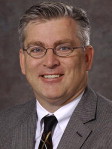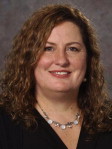

It is particularly rewarding for me to be collaborating on this important endeavor with Guest Editor, Dr Nanette Joyce, Assistant Professor of Physical Medicine and Rehabilitation at the University of California Davis and a rising star among physiatrists in the United States in the new subspecialty of Neuromuscular Medicine. Nanette has followed one of the most impressive career training pathways ever embarked on by a PM&R specialist in the field of Neuromuscular Medicine. She completed a Fellowship in Neuromuscular Medicine in the ACGME-approved Fellowship at UC Davis (currently the only such approved Neuromuscular Medicine fellowship housed in a Department of PM&R) and she is Board certified in Neuromuscular Medicine, which is a relatively new subspecialty of the American Board of PM&R and the American Board of Psychiatry and Neurology. She then completed a 2-year Fellowship in Translational Medicine and Stem Cell Therapeutics in the UC Davis Institute for Regenerative Cures with her Fellowship being supported by the California Institute of Regenerative Medicine. In July of 2012, she was awarded a K12, early career development award, from the Association of Academic Physiatrists and the National Institutes of Health (NIH). She is currently participating in their associated Rehabilitation Medicine Scientist Training Program and is continuing her work in engineering stem cells to secrete trophic factors in a controllable manner and developing assays to characterize the cellular product. In ALS, for example, neuromuscular junction failure with motor neuron apoptosis leads to muscle weakness, atrophy, and severe disability from paralysis along with respiratory failure and death. Dr Joyce is bringing this novel therapeutic approach to treating motor neuron disorders from bench to bedside by performing proof-of-concept and preclinical studies. I am incredibly proud to have been one of the many mentors involved in Nanette’s career development.
Tremendous advances in molecular genetics over the past three decades have led to a greater understanding of disease pathogenesis in a variety of neuromuscular diseases, but for most NMD conditions there remains no current therapy for the underlying cause. Many promising therapeutic strategies have recently been developed in animal models. Human trials of some of these strategies have recently started, leading to the hope of effective treatments for many of these currently incurable diseases. But while it is recognized that these diseases may remain incurable, NMDs are not untreatable. The last two decades have seen tremendous improvement in patient outcomes as a result of coordinated multidisciplinary care directed by the neuromuscular specialist. Improvements in disease management in Duchenne muscular dystrophy (DMD), for example, include treatment with corticosteroids, surgical management of spine deformity, noninvasive ventilation (specifically refined and popularized by Dr John Bach, a physiatrist), and more effective treatment of cardiomyopathy. These interventions have led to improved function and survival and a changing disease natural history in DMD. Similarly, ALS survival has been impacted by noninvasive and invasive ventilation and aggressive nutritional management. The neuromuscular medicine and physiatry specialists are key health care providers who work cooperatively with a multidisciplinary team to maximize health and functional capacities in NMD.
Much of our research in neuromuscular diseases over the years at UC Davis has been funded by the National Institute on Disability and Rehabilitation Research (NIDRR), the largest federal funding source for medical rehabilitation research and training. We recently received a NIDRR Advanced Rehabilitation Research Training Grant focused on training rehabilitation scientists in neuromuscular and neurodevelopmental disorders. NIDRR is to be commended for their long commitment to medical rehabilitation research and research training for persons with neuromuscular diseases.
It has been encouraging to see an increase in the NIH, Centers for Disease Control and Prevention (CDC), and Department of Defense (DOD) portfolios devoted to neuromuscular diseases. The situation in muscular dystrophy is a case in point. In 2001, as a result of effective lobbying efforts by a number of consumer advocacy groups such as Muscular Dystrophy Association (MDA), Parent Project Muscular Dystrophy (PPMD), FSH Society, Myotonic Dystrophy Foundation, and others, landmark muscular dystrophy legislation was introduced in Congress. At the time the bill—the Muscular Dystrophy Community Assistance, Research, and Education Amendments (MD-CARE Act)—was unveiled in 2001, few bright spots existed for patients and families battling muscular dystrophy. Federal research for varied forms of muscular dystrophy was minimal; surveillance and data collection were nonexistent, and the federal government lacked a comprehensive muscular dystrophy research and care agenda. The MD-CARE Act forever changed this landscape.
The law created what are now multiple research Centers of Excellence—named after the late Sen. Paul Wellstone—funded by the NIH. It launched a data collection and surveillance program at the CDC. The law also created the Muscular Dystrophy Coordinating Committee to unite all relevant government and patient voices to develop an aggressive, milestone-driven action plan for all the muscular dystrophies. None of this would have been possible without the passionate, persistent, and informed advocacy of the muscular dystrophy community and a dedicated group of congressional champions. The tangible benefits from the MD-CARE Act are profound and have brought about improvements for patients and families that seemed far away when the legislation was introduced a decade ago, such as the following:
- •
Government and private sector funding for muscular dystrophy research has grown sharply, with hundreds of millions in NIH and CDC funding helping leverage private resources and yielding significant milestones.
- •
Multiple drugs and biologics are in varying phases of the discovery pipeline, including the critical phase III clinical trial stage.
- •
Early and correct diagnoses and evidence-based care standards mean more patients are receiving timely and improved care and more families benefit from genetic counseling.
- •
Advances in adaptive and communication technologies permit patients to live more engaged and connected lives.
- •
Improved life expectancy for individuals with muscular dystrophies and many other NMDs means more are pursuing college education and entering the workforce.
Similar advocacy efforts by the MDA, the ALS Association, Families of SMA, CMT Association, and many other advocacy groups are producing great awareness, improved care standards, and increased nonprofit and federal funding for a variety of other NMDs.
The emphasis of this Part I issue is on the diagnostic evaluation of NMDs and therapy issues. Effective management and anticipatory guidance for NMDs require an accurate diagnosis. It is critical for physiatrists and other clinicians who treat NMDs to understand key points to the initial clinical evaluation, electrodiagnostic evaluation, molecular genetic testing, and the role of muscle biopsy in diagnosis. A focus on therapy issues is an appropriate additional focus for this first issue, since physiatrists are experts in the rehabilitation and multidisciplinary management of disabling conditions, collaborating with allied health professionals such as physical therapists, occupational therapists, speech pathologists, orthotists, augmentative communication and assistive technology specialists, exercise scientists, recreational therapists, and rehabilitation engineers. In addition, physiatrists often participate with the multidisciplinary team in the management of chronic pain syndromes in NMDs, so the last article on “Disease Burden in Neuromuscular Disease: The Role of Chronic Pain” is particularly relevant to the PM&R specialist.
The number of MDA-sponsored neuromuscular disease clinics that have active participation by a PM&R specialist remains a substantial minority. While over 20 ACGME-approved Neuromuscular Medicine Fellowships have been developed in US Neurology Departments, there remains just one such training program housed in a Department of Physical Medicine and Rehabilitation (at UC Davis). Our hope is these two issues will demonstrate the value of physiatry to current practicing Neuromuscular Medicine specialists, increase participation of PM&R specialists in NMD clinics, spur physiatry residents to consider subspecialty training in Neuromuscular Medicine, motivate the young faculty in PM&R who have graduated from our program and other neurology-based fellowship programs to develop their own fellowship training programs in Neuromuscular Medicine, and ultimately expand the rehabilitation expertise among all Neuromuscular Medicine specialists. The ultimate goal of these two issues focusing on clinical management and rehabilitation is to improve the quality of life for people with neuromuscular diseases and their families.
This issue is dedicated to William M. Fowler Jr, MD, a pioneer in the rehabilitation management of persons with neuromuscular diseases (see Dedication). No physiatrist in history has been as instrumental as Dr Bill Fowler, my mentor and colleague for decades, in advancing the scientific basis of the rehabilitation management of neuromuscular diseases.
Finally, Dr Nanette Joyce and I wish to personally thank all of the contributing authors for all their time and hard work invested in the articles in Parts I and II, which will provide you with a tremendous wealth of clinical expertise that can be directly applied to your practice.
Stay updated, free articles. Join our Telegram channel

Full access? Get Clinical Tree





